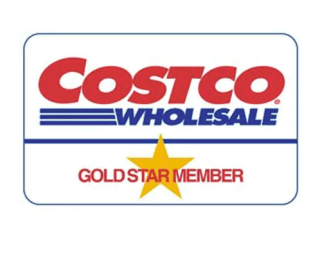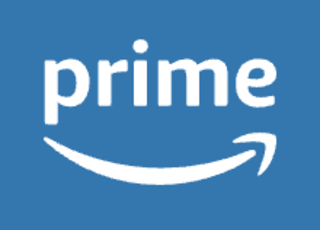Inflation has raised the price of everything: whether you’re at the pump or in the grocery aisle, the items in the basket of goods under the Consumer Price Index — including food and energy —have increased by a collective 7.1% since Nov. 2021, according to the World Economic Forum. Shoppers are routinely spending more on pantry staples and meat and dairy products — for example, eggs prices rose 60% in 2022, and cereal and bakery product prices rose 16.1%. Since consumers “don’t have a ton of control” when it comes to sustained high prices, many are left looking for tips on how to save money on groceries this year, said Kristin McGrath, shopping expert at RetailMeNot.
SKIP AHEAD Where to save on groceries | How to cut down your food bill
Cutting down your grocery bill often feels like a juggling act between comparing prices, clipping coupons, scouting out sales and more. But “you can spend less money on groceries and buy great, affordable ingredients without losing your mind,” said Erin Chase, founder of $5 Dinners, which she started during the 2008 recession.
To help you start saving, we talked to experts about how you can reduce the price of your grocery bill during inflation and where to shop for affordable groceries. We included information about the benefits of warehouse memberships, tips for making your shopping list, how to strategically take advantage of sales and more.
Where to shop for affordable groceries online in 2023
How much you spend on groceries is largely impacted by where you shop — some stores are specifically known for their affordable prices. We asked experts about where you may want to consider shopping if you’re looking to cut down your grocery bill and listed their suggestions below.
For each option, we included related membership fees if applicable and credit cards to consider if you frequently shop at a specific store — you may be able to earn cash back and get access to other rewards. It’s also worth researching whether any credit cards you currently have pay for the membership fee to certain stores’ loyalty programs or warehouse clubs. For example, American Express Platinum cardholders can get a free Walmart+ membership. CNBC Select money experts provide more insights into the best credit cards for shopping at Amazon, Walmart, Costco and Sam’s Club in their respective guides.
Costco
Price: Gold Star Membership is $60 a year; Executive Membership is $120 a year; and Business Membership is $60 a year (you’ll need to show a valid business license/identification to qualify)
Credit card option: Costco Anywhere Visa Cards by Citi, which offers members 2% back on purchases made at Costco both in stores and online
Costco — former Select senior editor Morgan Greenwald’s favorite warehouse club — offers lower prices on groceries and household items by selling them in bulk, and its memberships offer a range of other benefits like gas and pharmacy discounts, experts told us. The warehouse club has its own in-house brand, Kirkland Signature — some of the best deals are on Kirkland Signature products, many of which are shoppers’ favorite Costco products. Costco members in some areas can also get same-day delivery via Instacart, though online prices are slightly higher than they are in stores.
Sam’s Club
Price: Club Membership, the standard option, is $50 annually; Plus Membership, which gets you 2% back on qualifying purchases up to $500 a year, is $110 annually
Credit card option: Members can sign up for the Sam’s Club Mastercard, which offers Club members 1% back and Plus members 3% back in Sam’s Cash on purchases
Sam’s Club — a warehouse club owned by Walmart — offers similar bulk groceries and household goods to Costco, but its memberships are lower in price. Sam’s Club members can buy groceries in stores nationwide or shop online and pick up items. Members also save on Member’s Mark products (Sam’s Club’s in-house brand) and get access to special discounts, plus they can take advantage of fuel savings, discounts at the tire and battery center and more.
Boxed
Price: Anyone can use Boxed, or you can sign up for the membership program, Boxed Up, for $49 a year to get 2% back on every purchase and receive exclusive discounts and free standard shipping on purchases of $20 or more
Credit card option: None
If you’re interested in buying in bulk but don’t want to pay to go to a warehouse club, you can use an online service like Boxed, which sells oversized containers or multipacks of groceries and household essentials. You can also enroll in autosave subscriptions for certain products — which earns you a 5% discount — if you want them delivered on a consistent schedule.
Amazon Prime
Price: A Prime membership costs $139 a year, and discounted memberships are available for students and those who qualify for certain types of governmental assistance
Credit card option: Amazon Prime Rewards Visa Card, which offers Prime members 5% back at Whole Foods and on Amazon Fresh orders
As an Amazon Prime member, you can shop for groceries three ways:
On Amazon: Being a Prime member gives you access to fast and free delivery options like free two-day shipping. Experts recommended purchasing non-perishable goods and household essentials on Amazon, especially if you’re looking to buy in bulk — you can buy snacks like granola bars, canned foods and household essentials through the retailer without paying shipping or delivery fees. If you want certain things delivered regularly, you can also enroll in Subscribe & Save, which can help you get a discount up to 15%.
Through Whole Foods: Amazon Prime members can order groceries via Whole Foods and either pick them up in store or get them delivered. While experts told us Whole Foods is typically a pricer grocery store compared to other options, Prime members can take an extra 10% off sale items while shopping at the grocery store in-person or online.
Through Amazon Fresh: Amazon Fresh offers a wider variety of food and household essentials compared to Whole Foods since you’re not limited to what one specific supermarket carries. Certain items also have a Subscribe & Save option, which will automatically ship the item on a consistent schedule you set for up to 15% off.
Walmart+
Price: Membership costs $98 a year
Credit card option: Capital One Walmart Rewards Card, which gives anyone 5% back on purchases made on Walmart’s website
While anyone can shop for groceries at Walmart, Walmart+ members get free same-day delivery on grocery orders over $35. McGrath said Walmart+ members also have access to exclusive coupons, and the service frequently offers a variety of grocery-related promotions for members, like a discount if you’re trying curbside pickup for the first time.
Tips for saving money on groceries, according to experts
Saving money on groceries and other household essentials doesn't just happen at the store. There are steps you can take before and after shopping to help cut costs, from couponing to storing your produce properly. Below, experts shared their tips for saving money on groceries, whether you shop in-person or use grocery delivery services.
Meal plan
Although they go hand in hand, meal planning is different from meal prepping. Meal planning involves deciding what you want to cook in a given week — in other words, you’re setting the menu. This tells you exactly what ingredients you should buy, helping you make a grocery shopping list and avoid purchasing extra food that could go to waste. When you get to the grocery store or add items to your online shopping cart, however, it’s up to you to stick to the list and avoid impulse purchases.
As you meal plan, take inventory of your pantry, refrigerator and freezer to see what ingredients you already have and which may expire soon, said Toni Okamoto, founder of the blog Plant-Based on a Budget. Doing so may spark a meal idea — if you have a head of broccoli you need to use before it goes bad, for instance, you may want to brainstorm dishes to add it to.
Use coupons
For the most part, the days of cutting coupons out of newspapers and catalogs are over, said Okamoto. “All you need to do is download the app to your favorite stores to digitally clip their coupons, and when you’re at the register, have the clerk scan the barcode,” she explained. A benefit of using couponing apps is that they update coupons automatically, so if one expires, it’s removed. This ensures you don’t count on using a coupon to help you save on a specific item only to find out it’s expired when you get to checkout, McGrath said.
Okamoto also suggested signing up for grocery store- and brand-specific email lists to get digital coupons sent to your inbox when they’re available. McGrath additionally recommended browsing deal-finding and cash back websites. And be sure to visit your grocery store’s website — it will often have a page dedicated to weekly ads, which is where you’ll find coupons and buy-one-get-one-free offers, Chase said. Some discounts are specific to certain days of the week, which can clue you in to when might be the most cost-effective time to shop.
Scout out sales
Beyond couponing, experts recommended zeroing in on broader sales while grocery shopping, which you can learn about online, via apps or in newspapers and catalogs. But don’t just assume every sale or deal is a good one — before you buy an item, do a price comparison between the brand that’s on sale and a few that aren't.
“Grocery stores spotlight ‘sale’ items on the endcaps of the aisle that are often paid placement, offering them up as a deal,” Okamoto said. “But when you go to the section where those products belong, you’ll often find that there are cheaper options.” The same goes for shopping online while using grocery delivery services: The website’s homepage may show a handful of deals, but when you go to an ingredient-specific page, you may find cheaper options.
Okamoto and Chase urged customers to also check the price-per-ounce when comparing prices between different options. While a small box of rice that’s on sale may cost less overall compared to a larger box that’s not on sale, evaluating the price-per-ounce could show you that the larger box is cheaper by volume, Chase said. A larger box of food is also likely to last you longer, so you don’t have to rebuy it as often.
If you find a great sale or deal on a non-perishable ingredient you use often — or a perishable one you can extend the lifespan of by freezing — Chase recommended buying a few packs. “You have to adopt the mindset that savings now are going to last me a long time,” she said. “Getting food on sale today means you won’t have to pay full tomorrow.” This is especially the case for protein like meat and fish, which Chase said is the most expensive part of any meal. If you know your family eats certain proteins on a consistent basis, buying extra and freezing it is extremely beneficial, Chase said.
Join loyalty programs
Whether you use grocery delivery services or shop in-person, stores usually offer loyalty programs you can join — some are free, but others have a monthly or yearly fee. McGrath said loyalty programs “often unlock exclusive pricing or even rewards that you can use to defray the cost of a future purchase.” For example, Amazon Prime members get access to exclusive sales and deals while shopping at Whole Foods online or in stores. And if you use grocery delivery services, joining their loyalty programs may include benefits like free or discounted delivery and shipping fees.
Buy in bulk at warehouse clubs
Experts said warehouse clubs like Costco, BJ’s and Sam’s Club offer some of the lowest prices on groceries. They sell products in bulk, which “essentially lets you lock in today's prices in case they go up in the weeks and months ahead,” McGrath said.
But before joining a warehouse club, experts said there are three factors you should consider to decide if buying in bulk is right for you:
How many people live in your household? Experts told us buying in bulk doesn't always make sense if you live alone or in a two-person household, but it’s often very beneficial for larger families.
Do you have space to store extra items? Buying in bulk means you’ll have to store items for later use, or tuck away larger containers of products that may not fit in your kitchen cabinets. If you don’t have storage space, finding a place to put extra groceries and household essentials can be challenging.
What items do you plan on buying in bulk? It makes the most sense to buy pantry staples, wellness products and household essentials in bulk, experts said. If you buy perishable items like fresh produce and dairy products, they may expire before you have the chance to eat them, thus wasting money and creating food waste.
Compare the price of store brands versus name brands
Generally speaking, experts said that store brands are cheaper than name brands. But if a name brand item is on sale, it may cost less than a store brand item, which is why Chase encourages shoppers to do a price-per-ounce comparison before adding something to their cart. Overall, if you’re not brand-loyal, Chase said shopping store brands is one of the most helpful things you can do to lower your grocery bill.
Also, keep in mind that if you’re shopping in-person, grocery stores tend to place more expensive options at eye-level — “many people don’t take the time to look up or down to see what’s cheaper,” Okamoto noted. Because of this, if you’re looking for store brands, you may find them on higher or lower shelves.
Consider paying with a credit card
Select money experts said using a credit card to pay for your groceries may be beneficial, depending on which one you have. Some credit cards offer cash-back rewards, the ability to earn additional rewards points at select stores and other benefits. But be sure to research different options to find the best one for you — experts recommended paying close attention to factors like annual fees and rewards rates.
Catch up on NBC Select's in-depth coverage of personal finance, tech and tools, wellness and more, and follow us on Facebook, Instagram and Twitter to stay up to date.











